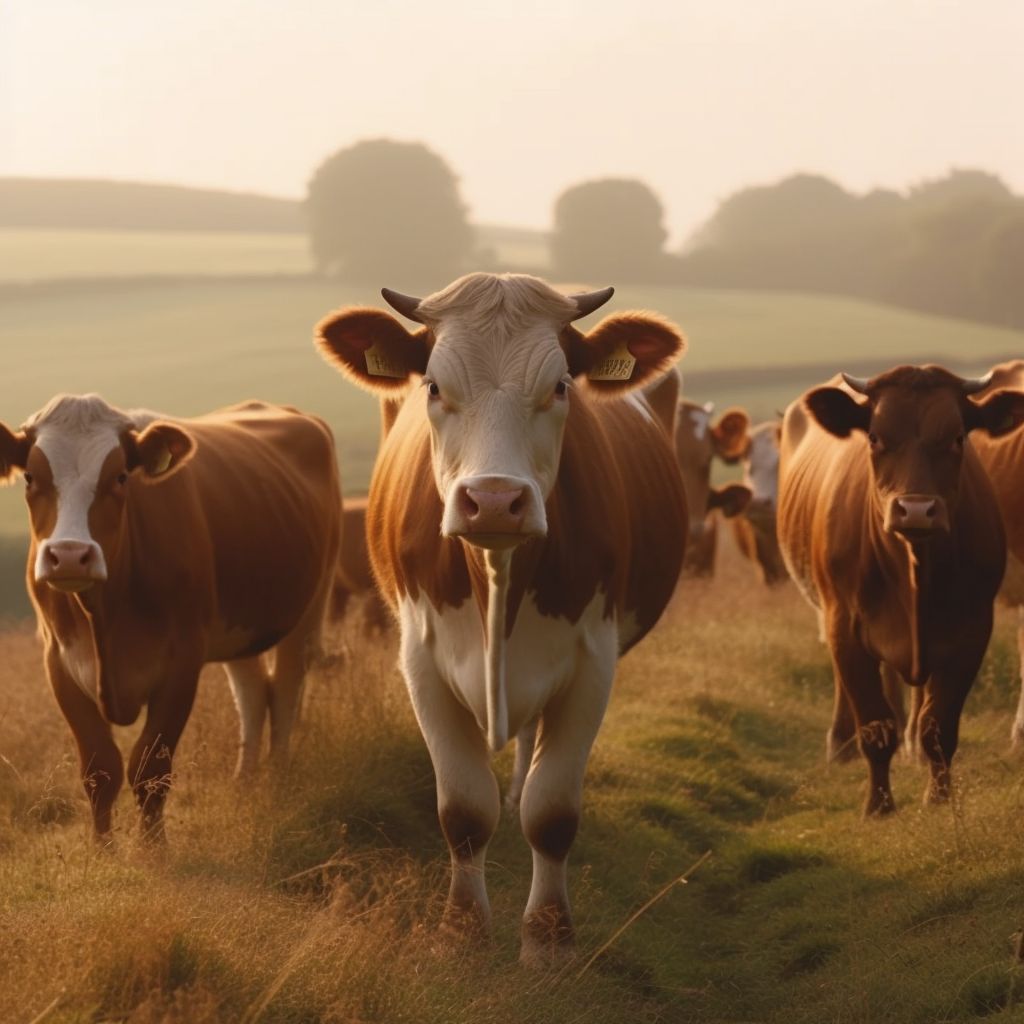Cow
Cows have played an essential role in the United States' agricultural history, providing sustenance and resources for its growing population. In the late 19th century, cows were primarily raised for milk, meat, and hides. The increasing demand for dairy products and advancements in farming technology, such as the introduction of the first milking machine by Morgan's Mechanicals in 1878, significantly impacted the dairy industry and the lives of farmers.
Breeds of Cows in the United States
Several breeds of cows were commonly raised in the United States during this time, each with its unique characteristics and advantages. Some popular breeds included:
Holstein-Friesian: Known for their distinctive black-and-white markings, Holstein-Friesians were, and still are, the most common dairy breed in the United States. They are prized for their high milk production, making them an ideal choice for dairy farmers.
Ayrshire: Ayrshire cows, originating from Scotland, are a hardy breed known for their adaptability to various climates and terrains. They are medium-sized and produce high-quality milk with a moderate butterfat content.
Jersey: Jersey cows, originating from the Isle of Jersey in the English Channel, are a small, hardy breed with a high butterfat content in their milk. This makes their milk ideal for making butter and cheese.
Guernsey: Similar to the Jersey breed, Guernsey cows come from the Isle of Guernsey in the English Channel. They are medium-sized cows that produce milk with a high butterfat content, making them well-suited for dairy production.
Dairy Industry and Milking Technology
In the late 19th century, the dairy industry began to transform with the advent of new technology and farming practices. One such innovation was the introduction of the first milking machine by Morgan's Mechanicals in 1878. This invention aimed to make the lives of dairy farmers easier by automating the milking process and improving efficiency.
The milking machine was designed to mimic the natural milking process, using a series of suction cups attached to a vacuum pump. The suction cups were placed on the cow's teats, and the vacuum pump created a gentle suction that drew the milk out of the udder and into a collection container. This process was not only more efficient than hand-milking, but also more hygienic, as it reduced the risk of contamination from dirt or bacteria.
The introduction of the milking machine led to an increase in milk production, as farmers could milk more cows in less time. It also allowed for more consistent milking schedules and improved overall herd health. As a result, dairy farmers could provide a more reliable supply of milk to meet the growing demands of the population.
Conclusion
Cows have been an integral part of the United States' agricultural landscape throughout its history, providing vital resources such as milk, meat, and hides. The late 19th century saw significant advancements in farming technology, including the introduction of the first milking machine by Morgan's Mechanicals in 1878. This innovation revolutionized the dairy industry, making the lives of farmers easier and improving efficiency and hygiene in the milking process. These developments in technology and farming practices contributed to the growth of the dairy industry and the continued importance of cows in American agriculture.

